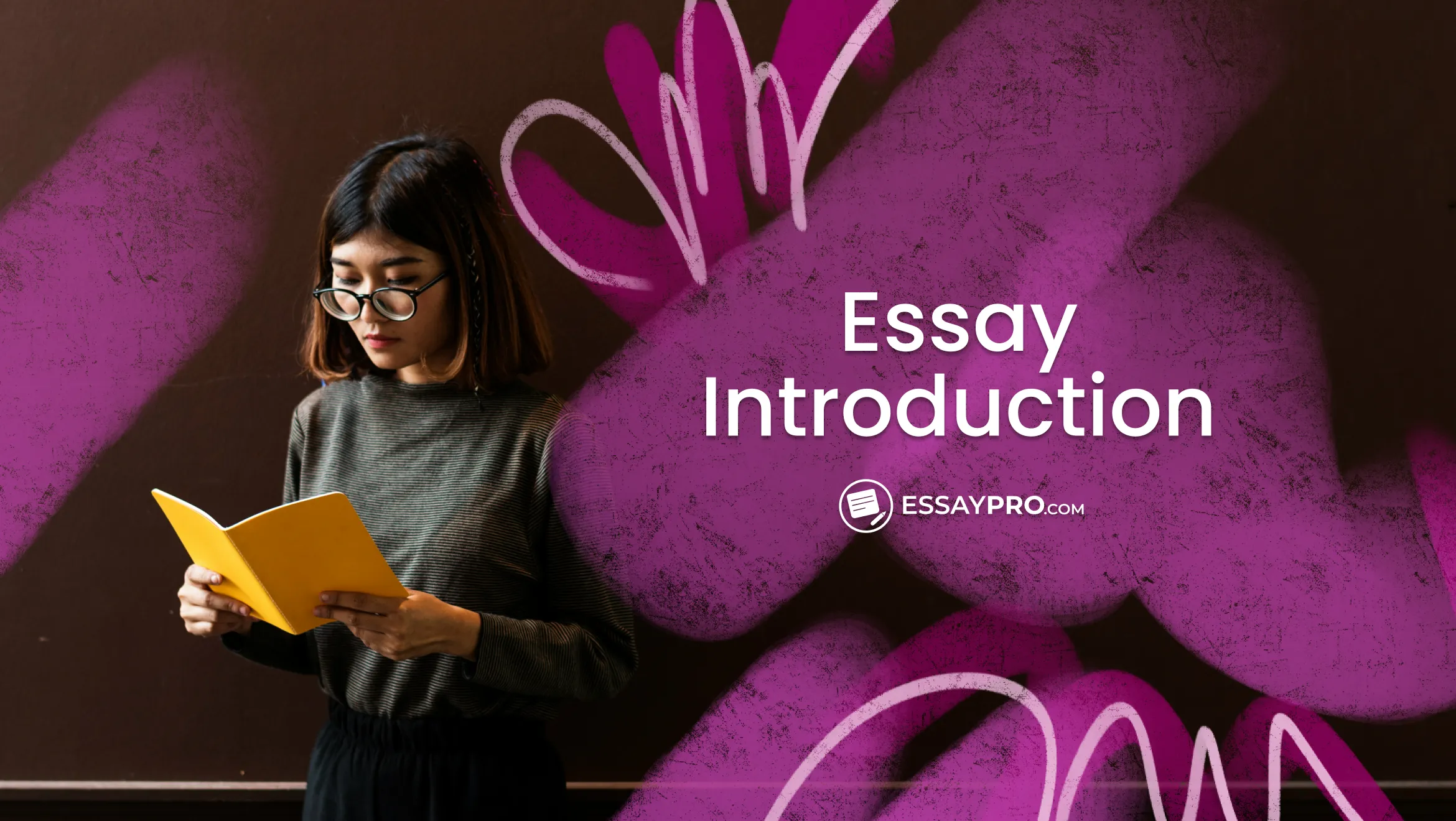Getting into a top university for an MBA, MS, or Ph.D. program often requires more than just good grades. Nowadays, one essential part of the application process is writing a Statement of Purpose, commonly known as an SOP. And since there's stiff competition out there, applicants with well-written SOPs are more likely to catch the attention of admissions committees and secure coveted spots in their desired programs.
So, if you're aiming for colleges in the USA, the UK, Canada, or elsewhere, knowing how to write a compelling statement is crucial. In this article, we'll break down the process for you, providing a clear format, step-by-step guidance, and even some samples and examples to help you get started!
What Is a Statement of Purpose
A Statement of Purpose is a key part of your application that lets you tell the admissions committee about your academic goals and why you're a great fit for their program. Unlike a personal statement, it highlights why you are applying to graduate school with a specific focus on your academic and professional goals. Essentially, it's your opportunity to explain who you are, what you want to achieve, and how their program can help you get there. When writing one, make sure to include the following:
- Personal background
- Financial status
- Academic history
- Work experience
- Short and long-term goals
- Why this school
- Field interest
- Activities
- Publications
- Submitted papers
- Hobbies
When writing your statement of purpose grad school, it's important to focus on relevant experiences and ensure that every detail you include serves the purpose of strengthening your application and showcasing your suitability for the program. Our dissertation writers for hire suggest a few more things to consider:
- Do not include irrelevant personal stories that do not tie back to your academic or professional goals.
- Steer clear of clichés and generic statements that do not add value or unique insight into your application.
- Do not speak negatively about yourself or others, as this can leave a bad impression.


How Long Should a Statement of Purpose Be
A Statement of Purpose should typically be between 500 to 1,000 words, which usually amounts to 1 to 2 pages. This length allows you to provide a thorough overview of your background, goals, and reasons for applying while also allowing you to be concise and focused. Admissions committees appreciate clear and well-structured essays that convey your message without unnecessary details.
It's important to check the specific requirements of the program you're applying to, as some institutions may have more precise guidelines regarding length. Sticking to these guidelines demonstrates your ability to follow instructions and respect their process, which is an important quality for any prospective graduate student.
Statement of Purpose Format
When it comes to formatting your Statement of Purpose, our psychology essay writing service asserts that attention to detail can make a significant difference in how your application is perceived.
Make sure to choose a professional font such as Times New Roman, Arial, or Calibri, and stick to a readable size, typically between 10 and 12 points. Avoid decorative fonts or sizes that are too small, as they can be difficult to read.
Next, use standard one-inch margins on all sides of the document for a clean, professional look and maintain consistent spacing. While there is no strict rule on the length of an SOP, aim for conciseness and clarity. Typically, SOPs range from 500 to 1,000 words or 1 to 2 pages, as we just discussed above.
Lastly, submit your SOP in a commonly accepted file format, such as PDF, and while saving your file, use a descriptive naming convention that includes your name and the purpose of the document (e.g., "Martin_Spilberg_SOP.pdf").
How to Write a Statement of Purpose
After thoroughly researching the programs and schools you want to apply to, it's time to start writing your statement of purpose. Before we move on to the next sections, here's a quick statement of purpose outline you'll need to follow.
%2520(1).webp)
Now that it's clear what sections to include in your document, let's review them and highlight what you need to focus on in each part. And while you're at it, you can simply request - write my personal statement for me. We're here to make your wish of a professionally crafted statement come true, no judgment, just top-notch help!
Step 1: Start Strong with an Introduction
Begin your statement of purpose by introducing yourself. Start with a brief overview of your academic and professional background, highlighting key experiences and accomplishments.
Provide a clear picture of who you are and your future aspirations. Highlight qualities that make you stand out from other applicants, such as unique experiences, being a member of an underrepresented population, or being the first in your family to attend college.
Next, specify the degree program, department, and school you are applying to. For example, "I am applying to the Ph.D. Program in Mechanical Engineering at Stanford University."
Discuss the origin and development of your research interests. Explain what you intend to study in graduate school and why. Share how you became interested in your field, linking your inspiration to your current research interests. Describe what motivates you to pursue a graduate degree in this field and why a Ph.D. is your next logical step.
Step 2: Share Your Research or Relevant Experience
Next, highlight specific experiences and professional achievements that make you a strong candidate. Include any relevant industry experience, such as volunteer work, internships, or residencies in your field. This is the time to showcase what you've done and how it prepares you for the program you're applying to.
This section will be the most detailed part of your statement. It should:
- Highlight your research or other relevant experiences.
- Illuminate your research and academic goals.
- Demonstrate your familiarity with the field's terminology and concepts.
Discuss the influences or inspirations that shaped your development as a researcher or scholar. Consider addressing the following points:
- Was there a pivotal moment when you realized you wanted to pursue this path?
- Have you had any summer research experiences or other significant experiences? Discuss them in detail.
- Is there a particular researcher or professor who inspired you? Mention them and explain their impact on your journey.
Explain how these research and relevant experiences relate to your current interests. Show your understanding of the subject matter you wish to study in graduate school and how these experiences have prepared you for this next step.
Step 3: Talk About Your Current Interests
To structure this section, address the following questions:
- Why is graduate school the next logical step for you? Explain how further education will help you build on your previous experiences and support your future aspirations. For example, you might say, "Graduate school will provide me with the advanced research skills and academic knowledge necessary to become a leading expert in renewable energy technologies."
- What do you plan to accomplish while in graduate school? Outline your goals and what you hope to achieve during your studies. This might include specific research projects you wish to undertake, skills you want to develop, or contributions you aim to make to your field. For instance, "During my time in graduate school, I plan to conduct research on innovative solar energy solutions and contribute to the development of sustainable energy policies."
By clearly articulating your current interests and future goals, you will demonstrate to the admissions committee why graduate school is an essential step in your professional journey.
Step 4: Explain Why You're a Good Fit for the Program
Describe why you are a good fit for the program. Start by explaining what attracts you to this specific program. Mention aspects like the curriculum, research facilities, or the program's overall reputation that appeal to you.
Next, identify particular professors you would like to work with and explain why. Choose at least two faculty members and mention their research areas. Include a sentence or two about their work, referencing relevant articles or books they have published. This shows that you have done your homework and are genuinely interested in their research.
For example, you might say, "I am drawn to this program because of its strong focus on sustainable energy solutions and its state-of-the-art research facilities. I am particularly interested in working with Dr. Jane Parker, whose research on solar energy innovations has greatly influenced my own work. Her article on photovoltaic materials was particularly inspiring. Additionally, Dr. John Doe's studies on wind energy integration align perfectly with my research goals, especially his recent book on renewable energy systems."
By demonstrating your knowledge of the program and its faculty, your statement of purpose shows that you are a well-prepared and motivated candidate, ready to contribute to and benefit from the program.
Step 5: Wrap It Up with a Summary and Conclusion
Conclude your statement with a strong summary. Don't just repeat what you've already said. Instead, use the information from the earlier sections to reinforce your main theme.
Highlight your enthusiasm for the program and your readiness to contribute. Emphasize the positive aspects of both yourself and the program. In your statement of purpose example, you could say, "In summary, my academic background and research experience have prepared me well for the challenges of this program. I am excited about the opportunity to work with leading experts like Dr. Parker and Dr. Doe, and I am confident that this program is the ideal place for me to advance my career in sustainable energy."
Keep the tone upbeat and positive, showing your eagerness to join the program and your belief in the mutual benefits of your admission. This leaves the admissions committee with a strong, positive impression of your application.
While you're busy hitting the books, our guide on how to cite APA in essay can be your trusty sidekick for championing your essays. So, give it a read for more detailed information.
Tips for Writing a Statement of Purpose
For polishing your document, you can use the following tips:
.webp)
Revise, Revise, Revise: Keep refining your statement.
- Make it clear and concise, and don't hesitate to make changes to improve it.
Proofread Carefully:
- Check your spelling and grammar.
- Make sure your writing flows well.
- Stick to the word limit.
- Have colleagues read it to check for readability and typos.
- Get feedback from academic mentors, colleagues, or teaching assistants.
- Ask faculty mentors to review it and offer advice specific to your field.
Address Inconsistencies Directly: If there are any gaps or issues in your academic record, mention them and explain how you dealt with them, such as retaking a course or changing your priorities.
- A single minor issue may be forgiven, but a low GPA can be a concern.
- Some applications have a section for this; use it if available.
- Focus on your strengths.
- You can also ask one of your recommenders to mention and explain the issue in their letter.
Statement of Purpose Example
Here are practical examples you can use for reference. Also, if you want custom-made samples on any topic, you can easily buy essay papers online on our platform.
If you need help writing your political science essay, our political science essay writing service is well-versed in the subject and ready to lend a hand. You can count on us to get the job done right!
Statement of Purpose Grad School Examples
You can refer to these samples once you've completed your graduate studies and are applying for further education at an advanced level.
To Wrap Up
In wrapping up, remember to take your time to craft your SOP carefully, paying attention to each section we've discussed. Don't hesitate to ask for feedback from mentors or peers to ensure it's polished to perfection. And most importantly, stay true to yourself and let your passion and goals shine through. With dedication and a well-written statement, you'll be well on your way to achieving your academic and professional aspirations.
Want to Pursue Graduate Study Soon?
Get closer to your dream graduate degree by crafting an uncontested purpose statement. For that, rely on our expert writers!
FAQs
How Long Should a Statement of Purpose Be?
A Statement of Purpose should be concise yet thorough, typically ranging from 500 to 1,000 words. This usually translates to 1 to 2 pages. Make sure to check the specific requirements of the program you're applying to, as some may have more precise guidelines.
What Is a Statement of Purpose?
A Statement of Purpose is a detailed essay that outlines your academic and career objectives, your reasons for choosing a particular program, and how it aligns with your future plans. It's an opportunity to showcase your passion, qualifications, and how the program will help you achieve your goals.
What NOT to Write in a Statement of Purpose?
Avoid writing irrelevant personal anecdotes, using informal language, or including clichés. Steer clear of negative comments about yourself or others, and don't exaggerate your achievements. Focus on relevant experiences and goals that directly relate to the program you're applying for.

Adam Jason
is an expert in nursing and healthcare, with a strong background in history, law, and literature. Holding advanced degrees in nursing and public health, his analytical approach and comprehensive knowledge help students navigate complex topics. On EssayPro blog, Adam provides insightful articles on everything from historical analysis to the intricacies of healthcare policies. In his downtime, he enjoys historical documentaries and volunteering at local clinics.
- Writing your academic statement of purpose : Graduate school. (n.d.). https://gradschool.cornell.edu/diversity-inclusion/recruitment/prospective-students/writing-your-statement-of-purpose/
- Joubert, S. (2024, February 6). How to write a statement of purpose for graduate School. Graduate Blog. https://graduate.northeastern.edu/resources/how-to-write-a-statement-of-purpose/
- How to write a great statement of purpose. (n.d.-b). https://www.mcnair.ucsb.edu/sites/default/files/sitefiles/resources/HowToWriteAGreatStatementOfPurpose.pdf
.webp)




